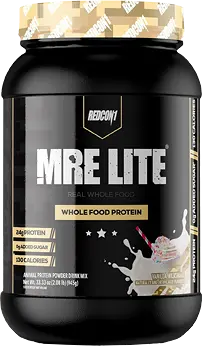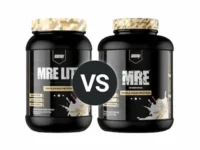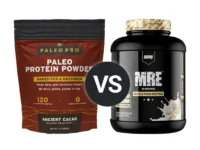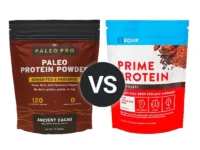Knowledge BaseYou're Questions Answered
Can you mix beef protein powder with milk?
Beef protein powder is a protein supplement made from the protein-rich parts of beef, often including muscle tissues and collagen. It is typically processed to remove fats and carbohydrates, resulting in a concentrated protein source. Mixing beef protein powder with milk, whether dairy or plant-based, can enhance the nutritional profile and taste of the protein shake. Here’s an overview of the benefits and considerations of mixing beef protein powder with milk.
Benefits of Mixing Beef Protein Powder with Milk
1. Increased Protein Intake
Combining beef protein powder with milk can significantly increase the protein content of your shake. For example, dairy milk naturally contains about 8 grams of protein per cup, while beef protein powder can provide 20-25 grams of protein per serving. This combination is beneficial for individuals looking to support muscle growth and recovery1.
2. Complete Amino Acid Profile
Beef protein powder is a complete protein, containing all nine essential amino acids required for muscle repair and overall health. Mixing it with milk can further enhance the amino acid profile, particularly if using dairy milk, which also provides a balanced spectrum of amino acids2.
3. Improved Taste and Texture
Beef protein powder can have a unique taste that may not be palatable to everyone. Mixing it with milk can help improve the flavor and texture, making the shake more enjoyable. The creaminess of milk, especially full-fat varieties, can mask any earthy or meaty flavors of the beef protein powder.
4. Additional Nutrients
Milk, whether dairy or plant-based, offers additional nutrients that can complement the benefits of beef protein powder. Dairy milk provides calcium, vitamin D, and other essential nutrients. Plant-based milks, such as almond or soy milk, often contain added vitamins and minerals, such as vitamin B12 and calcium, making them suitable for those avoiding dairy3.
Considerations
1. Choice of Milk
The choice of milk can depend on dietary preferences and potential allergies. Dairy milk is an excellent option for those who consume animal products, while plant-based milks like almond, soy, or oat milk are suitable alternatives for those who are lactose intolerant or prefer non-dairy options. Each type of milk has its own nutritional profile and flavor, which can influence the final taste and nutritional content of the shake.
2. Dietary Restrictions
While beef protein powder and milk can be mixed, it is important to consider any dietary restrictions or preferences. For example, individuals following a paleo or dairy-free diet may prefer to use plant-based milks rather than dairy milk.
3. Blending and Mixing
To achieve a smooth and well-blended shake, it is recommended to use a blender or shaker bottle. Gradually adding the beef protein powder to the milk while blending can help prevent clumping and ensure a consistent texture.
- Jäger, R., Kerksick, C. M., Campbell, B. I., Cribb, P. J., Wells, S. D., Skwiat, T. M., ... & Purpura, M. (2017). International Society of Sports Nutrition Position Stand: protein and exercise. Journal of the International Society of Sports Nutrition, 14(1), 20.
- Hoffman, J. R., & Falvo, M. J. (2004). Protein–which is best? Journal of Sports Science & Medicine, 3(3), 118-130.
- Craig, W. J. (2009). Health effects of vegan diets. American Journal of Clinical Nutrition, 89(5), 1627S-1633S.
Related Questions
Related Reviews

Your Answer
We are a participant in the Amazon Services LLC Associates Program, an affiliate advertising program designed to provide a means for us to earn fees by linking to Amazon.com and affiliated sites.






